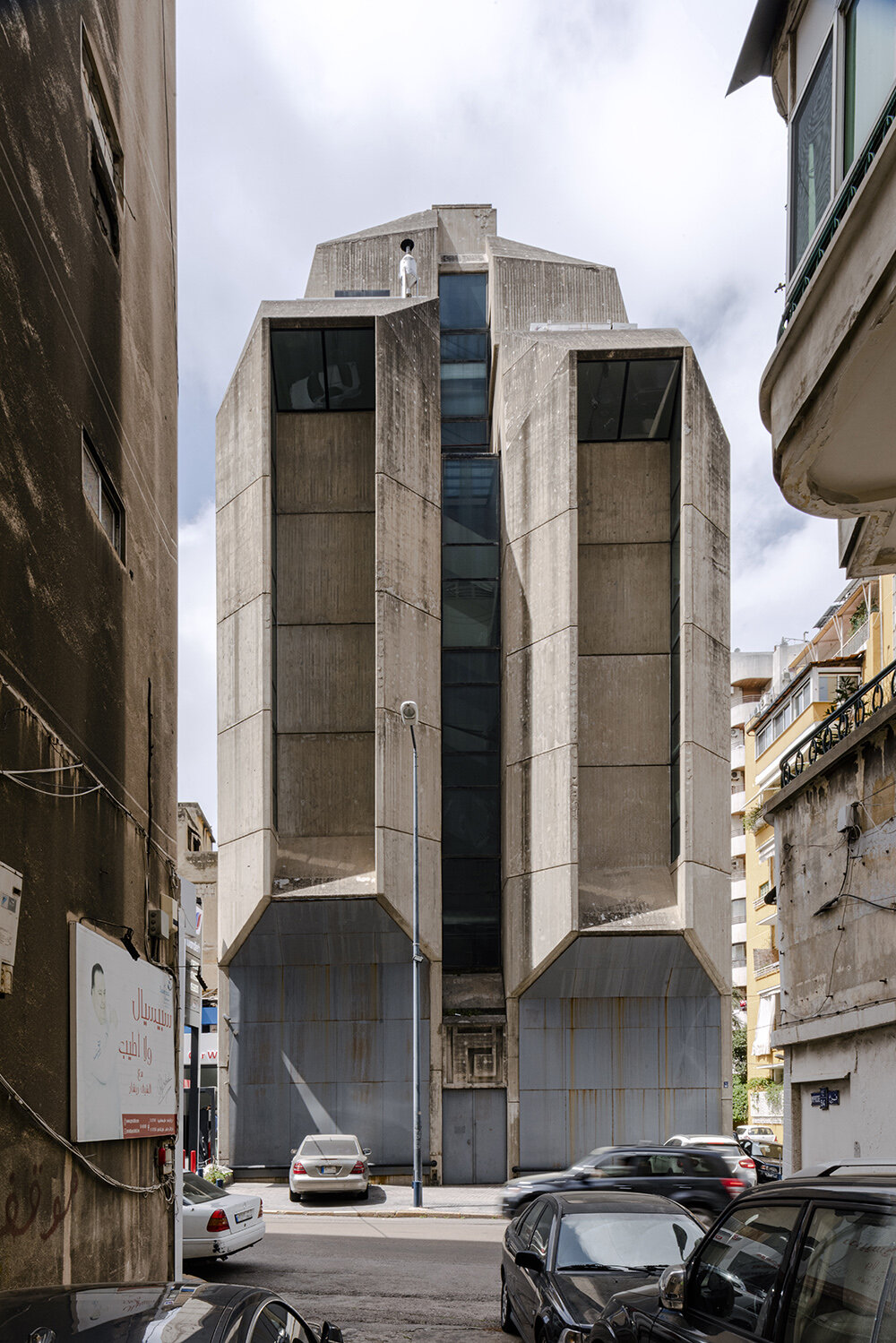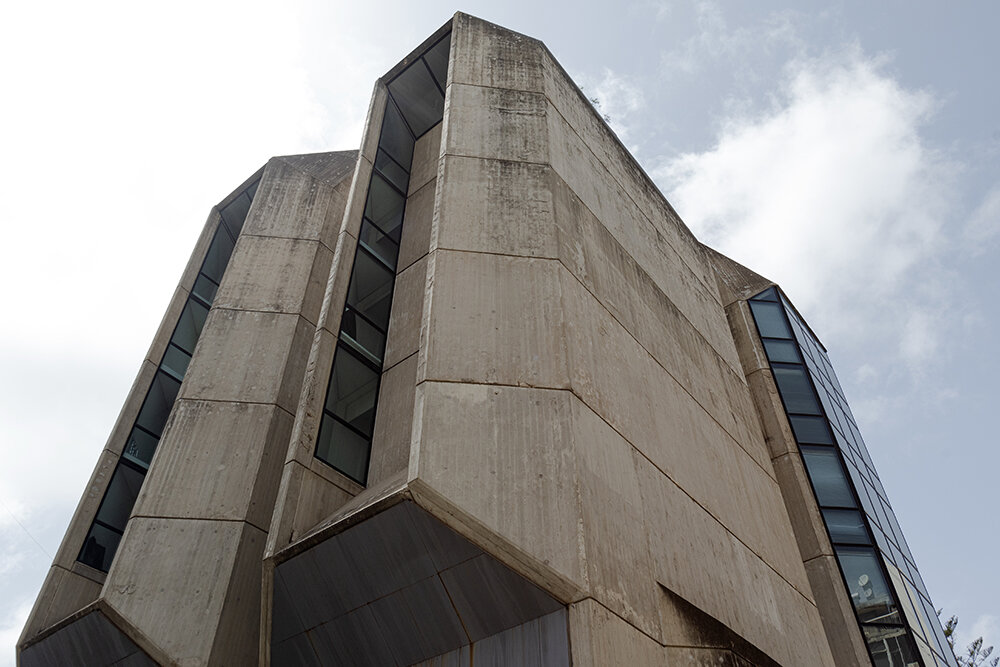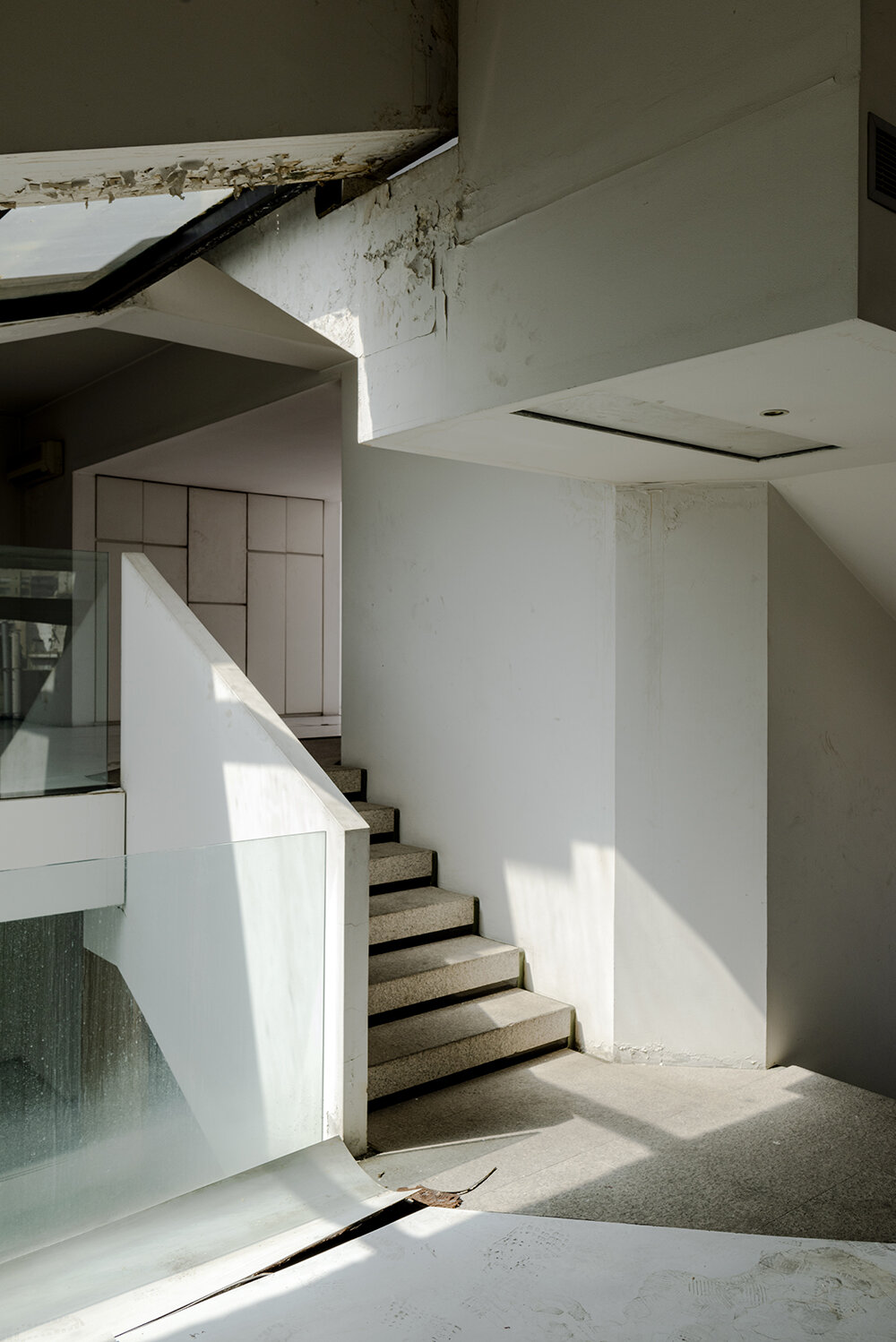interdesign building comes to life at we design beirut
We Design Beirut’s inaugural event has activated historical sites across the Lebanese capital. On that occasion, the four-day program resurrected an icon of brutalist and modern architecture: the Interdesign Building envisioned by the late Lebanese architect Khalil Khouri in 1973 and later completed in 1996 in the neighborhood of Clemenceau. Inside, a subjective recount of Khouri’s life and career took over every floor. Curated by his son, renowned architect Bernard Khoury, and grandson, Teymour Khoury, All Things Must (‘nt) Pass guides the visitor on an extraordinary tour of this hopeless, modern concrete structure. From its short-lived triumphs to its sad closure, the story of Khalil Khouri and the Interdesign building epitomizes in utmost ways the great aspirations of an extraordinary and forward-looking project that started during the post-independence years and ended with the political debacle of the young republic of Lebanon.
image © Walid Rashid
a hopeless modern project by the late architect khalil khouri
Originally designed as a showroom to display Khalil Khouri’s furniture produced for the international markets, the Interdesign Building remained unfinished for 23 years. Joined by his brother Georges, the late architect drafted the structure’s anatomy in 1973, eventually landing in central Beirut. Construction began shortly after, but the eruption of Lebanon’s Civil War that same year forced the project to halt. By the time Khouri was able to complete its construction in 1996, the financial realities of the new postwar economy had caught up with him, sending off the decline of his industrial ambitions and, with that, the closure of a singular and engaged modern project. As Bernard Khoury explained on the exhibition tour, the structure has remained dormant all these years and ‘will go back and sleep‘ once We Design Beirut’s program concludes.

image © Walid Rashid
brutalist on the outside, light and airy on the inside
Gray and rough, the brutalist concrete edifice emerges from the city streets as two protruding ‘towers’ split at the center by narrow glazing. At the top, a boulder-shaped ‘head’ completes the design, further highlighting the architecture’s unusual and striking presence. Angular strokes, concave surfaces, and heigh variations add depth to the building’s visual appeal, which constantly shifts when observed from different vantage points. Reaching the ground floor, the main facade reveals two ‘sealed’ window displays where the Interdesign showroom was supposed to be hosted. Interdesign started its business over eighty years ago with the early custom works of ebenist Elias El-Khouri and his team. Architects and manufacturers of furniture, his sons launched their first line of designs in the early 1960’s.

image © Walid Rashid
Unlike its intimidating shell, the brutalist building’s interiors reveal a perfectly soft aesthetic. Spanning 24 floors, the space exudes an airy quality with its all-white backdrop and diffuse daylight pooling through the narrow strip of glazing. As one walks up the levels, it becomes clearer just how unusual Khalil Khouri’s layout is. Intended to showcase the late architect’s own creations, from furniture pieces to architectural models, the Interdesign building breaks down into multiple floors, each interconnected by open voids to provide a sense of continuity and space. These voids, coupled with strategically placed openings, open up various perspectives and views throughout the interior — making it the ideal, contemplative setting to appreciate and explore exhibited works.

image © Walid Rashid
all things must(‘nt) pass: recounting khouri’s life and career
Between May 23rd and May 26th, 2024, We Design Beirut has interruped the Interdesign building’s dormant interiors with the dynamic installation, All Things Must (‘nt) Pass, tracing the late architect’s story and unorthodox life, even exposing the stark reality of the structure’s hopeless fate, hence the choice of title.
Born in 1929, Khalil Khouri wore many hats: architect, designer, artist, and builder. He even joined the army at some point, flying planes for hours long after the drills were over. His passion for aeronautics persisted long after he left his military endeavor. Yet, Khouri’s legacy shines brightest under the architecture umbrella; a follower of Le Corbusier and advocate of exposed reinforced concrete, he was dedicated to modernist principles and sought to challenge traditional and restrictive architectural norms.

image © Walid Rashid
celebrating interdesign building’s unusual layout
Displayed on the 24 plateaus of the Interdesign showroom are historical documents, photographs, architectural drawings and models, artworks, furniture pieces, and prototypes that were produced over more than half a century. Emphasizing the unusual display, most drawings and paintings were laid on tarp-covered floors, with white cushions placed next to each work, encouraging visitors to kneel and get a closer look. Nothing was hung, and everything was carefully covered, alluding to the building’s return to dormancy after the exhibition concluded. As originally intended, the scenography offered visitors an unexpected take on exhibition culture. Walking up every floor, the displayed pieces would take on different qualities if viewed from the top or bottom platform, when retreating toward a dark corner of a floor and moving toward the atrium-like center, where daylight reigns.

